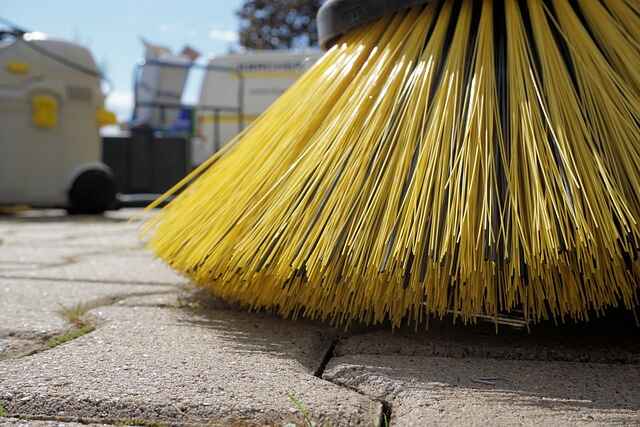
As the days grow longer and the weather warms, many of us feel an innate urge to throw open the windows, let in the fresh air, and tidy up our living spaces. This phenomenon is known as spring cleaning, a tradition deeply rooted in various cultures. Beyond the physical act of cleaning, there’s a psychological aspect to this ritual that goes beyond just dusting and decluttering. In this comprehensive guide, we’ll delve into the psychology of spring cleaning and explore why we feel so refreshed after giving our homes a thorough makeover.
Across different cultures, spring has often symbolized renewal and rebirth. The idea of cleaning and organizing during this time is not just a practical response to a changing climate but also a symbolic way of clearing out the old and making way for the new. From Persian New Year’s cleaning rituals to Jewish Passover preparations, the act of spring cleaning has transcended geographical boundaries.
Spring Cleaning is not just a cultural phenomenon; it’s deeply ingrained in our biology. As the days get longer and the temperatures rise, our bodies respond to the increased sunlight. Exposure to natural light boosts serotonin levels, the neurotransmitter associated with mood and well-being. This surge in serotonin motivates us to engage in activities that enhance our surroundings, making Spring Cleaning a natural response to the changing seasons.\
From an evolutionary standpoint, the impulse to clean and organize may have roots in survival instincts. Spring marked the end of harsh winters when resources were scarce. Cleaning and decluttering could have been a way for our ancestors to ensure a fresh start, discarding old and potentially harmful items and making space for new, life-sustaining resources.
Here is our post on Impacts of Color Psychology in Cleaning and Organization which you will not want to miss before you embark on your cleaning task.
The KonMari Method and Mindful Cleaning
Marie Kondo’s KonMari Method has gained widespread popularity for its emphasis on keeping only items that “spark joy.” This approach to decluttering is rooted in the belief that our belongings should evoke positive emotions. Spring cleaning becomes more than just a chore; it becomes a mindful practice of surrounding ourselves with things that bring us happiness.
Incorporating mindfulness into spring cleaning can amplify its psychological benefits. Instead of viewing cleaning as a mundane task, approach it with intention and presence. Mindful cleaning involves being fully engaged in the process, appreciating the sensory experiences, and fostering gratitude for the home you’re creating.
The Role of Natural Light and Fresh Air
1. Biological Effects of Sunlight
Spring cleaning is often accompanied by throwing open windows and letting sunlight flood into our homes. Exposure to natural light has numerous psychological benefits, including the regulation of the sleep-wake cycle and the production of serotonin, a neurotransmitter associated with mood regulation.
2. Air Quality and Cognitive Function
Proper ventilation during spring cleaning not only freshens up the space but also improves indoor air quality. Clean air has been linked to better cognitive function, increased energy levels, and overall well-being. Breathing in fresh air during and after cleaning can contribute significantly to that post-cleaning sense of refreshment
The Psychological Benefits of a Tidy Space
1. Reduction of Stress and Anxiety
A cluttered environment can contribute to increased stress levels and anxiety. Psychologically, our minds are influenced by our surroundings, and a messy space can lead to feelings of chaos and overwhelm. Spring cleaning provides an opportunity to declutter, organize, and create a more harmonious living environment, thereby reducing stress.
2. Increased Productivity and Focus
A tidy space can have a profound impact on our ability to concentrate and be productive. When our surroundings are organized, our minds are free from unnecessary distractions. Spring cleaning is not just about aesthetics; it’s a strategic move to optimize our living spaces for increased focus and efficiency.
3. Sense of Accomplishment and Control
Completing a spring cleaning checklist gives us a sense of accomplishment. It’s a tangible way to take control of our surroundings and make positive changes. This sense of control can spill over into other aspects of our lives, fostering a proactive and empowered mindset.
The Environmental Impact of Spring Cleaning
1. Sustainability Practices
Spring Cleaning is an opportunity to reassess our consumption patterns and make environmentally conscious choices. Recycling, upcycling, and donating items contribute to sustainable living practices, aligning with a growing awareness of the environmental impact of our actions.
2. Connection to Nature
Spring Cleaning often coincides with the awakening of nature. Opening windows, letting in fresh air, and incorporating natural elements into our homes create a harmonious connection with the environment. This connection to nature has been shown to improve mood and overall well-being.
The Emotional Connection to Objects
1. Sentimental Items and Emotional Weight
Spring cleaning often involves making decisions about what to keep, donate, or discard. The process of parting with possessions, especially those with sentimental value, can be emotionally charged. Understanding the emotional connection to objects is crucial for making intentional choices during the cleaning process.
2. Emotional Release and Renewal
Letting go of items that no longer serve us can be liberating. Spring cleaning provides an opportunity for emotional release, allowing us to shed the weight of unnecessary possessions and create space for new experiences. This emotional renewal is a key factor in the sense of refreshment that follows a thorough cleaning.
Tips for a Fulfilling Spring Cleaning Experience
1. Set Realistic Goals:
Instead of overwhelming yourself with an extensive to-do list, set realistic goals. Break down tasks into manageable steps, focusing on one area at a time.
2. Involve the Whole Family:
Make Spring Cleaning a collaborative effort. Involving family members not only lightens the workload but also fosters a sense of shared responsibility and accomplishment.
3. Create a Pleasant Atmosphere:
Play uplifting music, use scented cleaning products, and open windows to let in natural light. Creating a pleasant atmosphere enhances the overall experience and reinforces the positive emotions associated with Spring Cleaning.
Sustainable Spring Cleaning Practices
- Eco-Friendly Choices: Opt for environmentally friendly cleaning products to minimize your ecological footprint. Sustainable choices contribute to both the health of your home and the planet.
- Upcycling and Donation: Instead of discarding items, consider upcycling or donating them. This not only reduces waste but also extends the lifecycle of objects, contributing to a more sustainable approach.
See also our post on The Ultimate Guide to Seasonal Cleaning: Fall and Winter Edition
Conclusion
In wrapping up our talk about Spring Cleaning and why it makes us feel so good, let’s put it in simple words. Cleaning in spring isn’t just about sweeping and scrubbing; it’s like a happy reset button for our minds. When the days get longer and the sun smiles brighter, our bodies tell us it’s time to tidy up. It’s like a natural mood boost – we can thank serotonin for that. And think about our ancestors; they probably cleaned up after winter to start fresh and find new things to survive.
Cleaning isn’t just good for our homes; it’s a kind of therapy for our minds too. Getting rid of the mess helps us relax and feel accomplished. It’s like a magic trick – you clean your space, and suddenly, your mind feels clearer. Clutter, you know, all that extra stuff lying around, can make us feel stressed. So, when we clean and make things neat, it’s like taking off a heavy backpack from our minds. There’s something special about doing the same thing every spring. It’s like having a superpower – we can control a small part of our world, even if everything else is a bit crazy. And when we follow these cleaning traditions, it’s like saying hello to the past while getting ready for the future.
We also talked about how being eco-friendly during Spring Cleaning is like giving a high-five to the Earth. Recycling and using less stuff can make our planet happy, and when nature wakes up outside, we can bring a bit of that freshness into our homes too. So, when you pick up that broom or start organizing your closet, remember, it’s not just about cleaning – it’s about giving yourself a mental high-five, saying goodbye to stress, and letting the good vibes of spring into your life.







